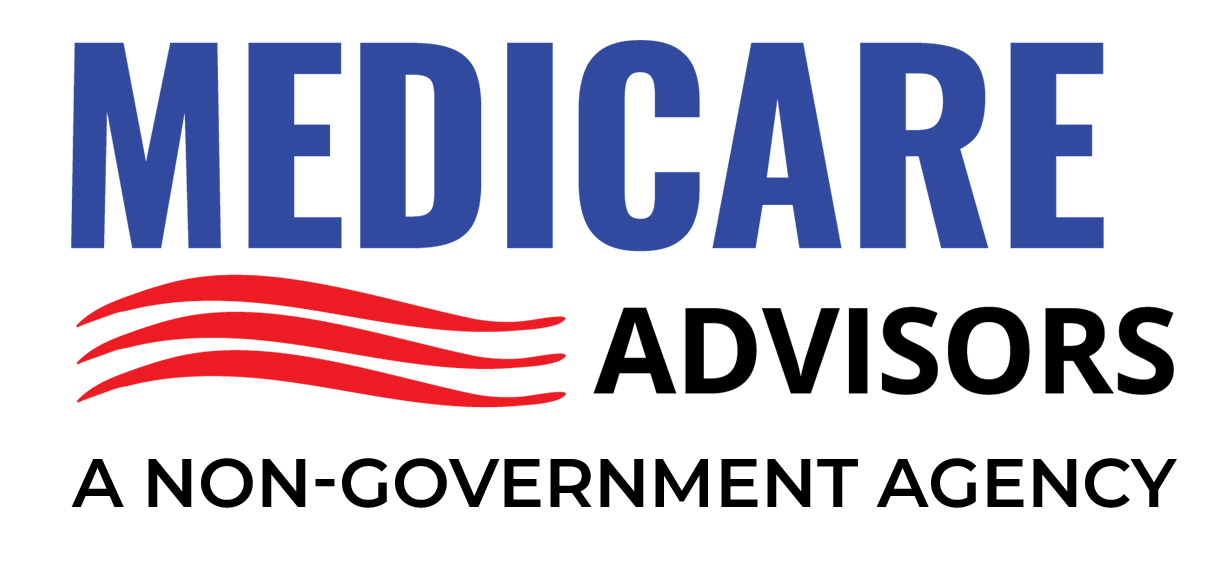Choosing between Original Medicare and Medicare Advantage (also known as Part C) can feel confusing. Both options offer valuable coverage for seniors and individuals with certain disabilities, but they differ in structure, cost, and additional benefits. This comprehensive guide aims to clarify everything you need to know about Medicare vs Medicare Advantage, including their pros, cons, potential pitfalls, and real-life experiences.
“Some folks jump into Medicare Advantage without understanding the network implications,” says Henry Beltran, the owner of Medicare Advisors. “Others stick with Original Medicare but don’t realize what they might be missing in extra benefits. The key is knowing your health priorities.”
Below, we’ll break down the parts of Medicare, the basics of Medicare Advantage, typical costs, coverage, common mistakes, frequently asked questions, and real user reviews to help you confidently decide on the right path. Let’s get started!
Understanding Original Medicare
Original Medicare is the federal health insurance program, primarily for people aged 65 or older, and some individuals under 65 with certain disabilities or end-stage renal disease (ESRD). It has two main components:
Medicare Part A
- What It Covers: Hospital insurance for inpatient stays, nursing facility care, hospice, and limited home health care.
- Costs: Most people get Part A premium-free if they or their spouse have worked and paid Medicare taxes for a certain amount of time. Otherwise, a premium may apply.
- Deductible & Coinsurance: A per-benefit-period deductible (which can reset if you haven’t been in a hospital for 60 consecutive days) and daily coinsurance for extended hospital stays.
Medicare Part B
- What It Covers: Outpatient care, preventive services (like annual wellness visits), lab tests, doctor’s appointments, medical equipment (wheelchairs, walkers, etc.), and some mental health services.
- Costs: You usually pay a monthly premium, often deducted from your Social Security check. High-income earners may pay more.
- Deductible & Coinsurance: There’s an annual Part B deductible. After you meet it, you typically pay 20% of the Medicare-approved amount for most services.
Pros of Original Medicare
- Freedom to Choose Providers: You can see any provider in the U.S. who accepts Medicare, no referrals needed.
- Simplicity: Straightforward coverage structure; no network or HMO/PPO complexities.
- No “Lock-In”: With Original Medicare, you can’t be forced to stay in a network—this is great for people who travel frequently.
- Medigap Options: You can buy a Medicare Supplement (Medigap) plan to help cover deductibles and coinsurance.
Potential Drawbacks of Original Medicare
- No Out-of-Pocket Maximum: There’s no cap on how much you might pay in a year, unless you purchase a Medigap policy.
- Limited Preventive & Additional Benefits: Minimal coverage for things like routine dental, vision, or hearing.
- Separate Drug Plan: You generally need a standalone Part D plan for prescription drugs.
- Gaps in Care: Skilled nursing or long-term care coverage is limited.
What Is Medicare Advantage?
Medicare Advantage plans, also known as Medicare Part C, are offered by private companies that contract with Medicare. These plans bundle Part A and Part B and frequently include Part D prescription drug coverage, plus extra benefits that Original Medicare typically doesn’t offer.
Basic Structure
- Primary Components: Part A, Part B, and often Part D, bundled into a single plan.
- Extra Benefits: Many MA plans include coverage for vision, dental, hearing, and wellness perks like gym memberships.
- Types of Plans: Most common are HMOs (Health Maintenance Organizations) and PPOs (Preferred Provider Organizations). Some regions also have PFFS (Private Fee-for-Service) and SNPs (Special Needs Plans).
Costs in Medicare Advantage
- Monthly Premium: Some plans charge no additional premium beyond what you already pay for Part B. Others may add a small premium.
- Deductibles & Copayments: You may encounter different cost structures for doctor visits, specialists, or hospital stays, unlike Original Medicare’s standardized 20% coinsurance.
- Maximum Out-of-Pocket: A big advantage is that Medicare Advantage plans must include an annual maximum on how much you pay out of pocket for Part A and Part B services.
Pros of Medicare Advantage
- Additional Benefits: Coverage for routine dental, vision, hearing, plus potential wellness programs.
- Convenience: One membership card can handle your hospital, medical, and often prescription drug coverage.
- Out-of-Pocket Limit: Once you hit your plan’s yearly max, the plan covers 100% of Medicare-approved costs for the rest of the year.
- Managed Care: Plans may help coordinate care, ensuring you get preventive services.
Potential Drawbacks of Medicare Advantage
- Provider Networks: HMO or PPO structures can restrict which doctors you see without extra costs.
- Varied Costs: You might encounter more copays or coinsurance each time you use services, especially for specialists or hospital stays.
- Plan Changes: MA plans can alter their benefits and provider networks yearly, meaning you have to re-check coverage annually.
- Prior Authorization: Some services (like expensive scans or procedures) may require pre-approval, adding bureaucracy and potential delays.
“There’s a real attraction to all-in-one coverage with Medicare Advantage,” remarks Henry Beltran. “But I always caution clients to review networks and copays carefully—sometimes $0 premium plans come with higher out-of-pocket costs down the line.”
Find Medicare Plans in 3 Easy Steps
We can help get up to $0 monthly premium Medicare plans
Comparing Costs: Medicare vs Medicare Advantage
One of the most pressing concerns for seniors is how much they’ll spend on healthcare annually. Here’s a look:
Original Medicare Cost Highlights
- Part B Premium: Everyone enrolled in Part B pays this; amounts vary by income.
- Part A: Usually premium-free, but you face deductibles and coinsurance per benefit period.
- No Annual Out-of-Pocket Cap: Potentially large bills if you have a major health event, unless you have Medigap.
- Medigap: Additional monthly premium if you choose to purchase one.
Medicare Advantage Cost Structure
- Part B Premium: You still pay this, plus any additional MA premium the plan charges (sometimes $0).
- Copays & Coinsurance: Most services will require a set copay or coinsurance (like $30 for a specialist visit).
- Annual Limit: A specified out-of-pocket maximum (often ranging from $3,500 to $8,300, depending on plan).
- Plan-Specific Costs: Each MA plan can set its own deductible or copay structure.
In deciding whether Original Medicare or an MA plan is cheaper, seniors should consider:
- Medical Usage: If you see specialists frequently or have upcoming surgeries, analyze if copays on an MA plan might exceed the cost of Original Medicare plus a Medigap premium.
- Travel Patterns: Frequent travelers might dislike networks.
- Prescription Needs: Many MA plans bundle Part D coverage; with Original Medicare, you buy a separate Part D.
Common Mistake: Focusing only on monthly premiums without checking how cost-sharing for hospital stays, specialists, or expensive procedures might blow up your budget.
Comparing Coverage: Medicare vs Medicare Advantage
While both options must cover the same core Part A and Part B benefits, the differences lie in how extra benefits and provider accessibility are handled.
Original Medicare Coverage Nuances
- Nationwide Acceptance: No matter where you are in the U.S., if a provider accepts Medicare, you’re covered.
- Limited Extra Benefits: You need separate insurance or out-of-pocket funds for routine dental, vision, or hearing services.
- Preventive Screenings: Medicare covers many screenings at 100%, but more specialized services might involve cost-sharing.
Medicare Advantage Coverage Nuances
- Extra Perks: Vision exams, hearing aids, dental cleanings, and sometimes over-the-counter allowances.
- Local Network: Typically restricted to doctors and hospitals in your plan’s network (especially in HMOs).
- Referrals Needed?: Many HMO plans require referrals to see specialists. PPOs may not, but going out-of-network can cost more.
“Original Medicare is beloved for its broad access,” Henry Beltran shares. “But some folks prefer the added coverage for dental or vision that you get with an Advantage plan. That can be a big plus if you have frequent dental work.”
Enrollment Periods: Key Differences
Medicare and Medicare Advantage have specific time windows for enrolling or changing coverage. Missing these deadlines can mean paying more or not getting coverage at all.
Original Medicare Enrollment
- Initial Enrollment Period (IEP): A 7-month window around your 65th birthday (3 months before, the month of, and 3 months after).
- General Enrollment Period (GEP): January 1 to March 31 each year if you didn’t enroll when first eligible (coverage starts July 1).
- Special Enrollment Periods (SEPs): If you delayed Medicare because you had employer coverage, you can enroll without penalty when that ends.
Medicare Advantage Enrollment
- Initial Coverage Election Period: When you first enroll in Part B, you can pick an MA plan instead of Original Medicare.
- Annual Election Period (AEP): October 15 to December 7 each year to switch from Original Medicare to MA or vice versa, or change MA plans.
- Medicare Advantage Open Enrollment: January 1 to March 31 each year; you can switch MA plans or go back to Original Medicare.
Find Medicare Plans in 3 Easy Steps
We can help get up to $0 monthly premium Medicare plans
Common Mistake: Failing to recheck your MA plan each year. Benefits, provider networks, and premiums can shift. If you’re not vigilant, you might get stuck with a plan that doesn’t fit your needs anymore.
People Are Always Asking…
We often hear:
- “Is Medicare Advantage worse than Original Medicare?”
- “What if I want to see a specialist who’s out-of-network for my MA plan?”
- “Does Original Medicare cover all my bills automatically?”
- “Are there hidden costs in $0 premium MA plans?”
In truth, neither Original Medicare nor Medicare Advantage is inherently “bad.” It boils down to your healthcare usage, budget, preferred providers, and comfort with networks. If you require specialized care or travel frequently, Original Medicare might be more flexible—especially if paired with a Medigap plan. If you rarely see a doctor and appreciate bundled coverage and an out-of-pocket max, a Medicare Advantage plan might be your best bet.
Potential Drawbacks of Each Service
Original Medicare Drawbacks
- No Prescription Coverage: You need to buy Part D separately.
- Unlimited Out-of-Pocket: Unless you have Medigap, there’s no annual cap.
- No Extra Perks: Routine dental, vision, hearing aids aren’t covered.
Medicare Advantage Drawbacks
- Network Restrictions: Plans typically cover only providers in their network, or charge more if you go out-of-network.
- Plan Changes: Benefit and formulary changes can catch you off guard each year.
- Referrals & Prior Authorizations: More rules for accessing certain tests or specialists.
Find Medicare Plans in 3 Easy Steps
We can help get up to $0 monthly premium Medicare plans
“It’s frustrating when a senior picks an Advantage plan for its low premium, only to find their cancer specialist is out-of-network,” Henry Beltran notes. “You have to weigh that against Original Medicare’s more predictable nationwide access.”
Reviews from Real Users
Below are real stories from seniors who share their experiences. Keep in mind, every person’s situation is unique.
Barbara, 70, Original Medicare + Medigap
“I love that I can see my longtime neurologist without any network hassles. Yes, I pay monthly Medigap premiums, but I never worry about 20% coinsurance. It’s worth the peace of mind!”
Victor, 73, Medicare Advantage (HMO)
“My monthly premium is zero besides my Part B, and it covers my prescriptions. The only downside is I had to switch primary care doctors last year when my old clinic dropped out of the network. That was tough, but overall I’m pleased.”
Janine, 67, Medicare Advantage (PPO)
“I’m a big traveler, so I liked the idea of a PPO with out-of-network coverage. I pay a bit more if I’m out of network, but it’s better than an HMO. The plan also includes dental and vision, which I use.”
Carlos, 72, Original Medicare Only
“I never got a Medigap or Advantage plan. I’m mostly healthy, but when I needed an outpatient surgery, that 20% bill was huge. I’m now rethinking my coverage for next enrollment period.”
Henry Beltran’s Personal Opinion
“As the owner of Medicare Advisors, I find that about half my clients lean toward Medicare Advantage for the out-of-pocket cap and added benefits,” says Henry Beltran. “The other half prefer Original Medicare’s freedom—they hate the idea of networks. If you want to control costs, an MA plan might do well, but if you want near-unlimited choice of doctors, you might stay with Original Medicare and add Medigap.”
He continues, “Don’t forget to compare the numbers and check that your favorite doctors or hospitals are in-network if you go MA. Each person’s situation is different—there’s no one-size-fits-all.”
F&Q (Frequently & Questioned)
Q1: Do I still pay the Part B premium if I choose Medicare Advantage?
A: Yes. You must be enrolled in Part B, and you continue to pay that premium, plus any additional plan premium (some MA plans charge $0 more, others charge extra).
Q2: Can I switch from Medicare Advantage back to Original Medicare?
A: You can do so during the Annual Election Period (Oct 15–Dec 7) or the Medicare Advantage Open Enrollment Period (Jan 1–Mar 31). Under certain circumstances (like plan discontinuation or other Special Enrollment Periods), you might switch at other times too.
Q3: Does Original Medicare cover dental or eyeglasses?
A: Generally, no. Basic dental, vision, and hearing coverage is not included. You can buy standalone policies or pick a Medicare Advantage plan that includes them.
Q4: What if I have a pre-existing condition?
A: Medicare Advantage plans can’t reject you for health reasons (except in some rare cases like ESRD prior to 2021, though the rules changed so ESRD beneficiaries can now enroll in MA). Original Medicare also covers everyone who meets the eligibility requirements.
Q5: Is there any scenario where Original Medicare might cost less than Medicare Advantage?
A: Yes, especially if you seldom need care and skip Medigap. But that could be risky. Also, if you require extensive or expensive services, sometimes Original Medicare plus a robust Medigap plan might be more cost-effective than paying repeated copays or coinsurance in an MA plan.
Q6: What about prescription drugs under Original Medicare?
A: You’d buy a standalone Part D plan. Costs vary by region, pharmacy network, and drug formulary.
Q7: Does every doctor accept Medicare Advantage?
A: Not necessarily. Each MA plan has its own network. Your provider might not accept your specific plan, or might charge higher out-of-network fees.
Making the Choice: Key Considerations
• Medical Needs
- Frequent doctor or specialist visits? A plan with predictable out-of-pocket costs might be better.
- Expecting surgery or hospital stays? Check coinsurance vs. copays carefully.
• Budget
- Is a monthly Medigap premium feasible? Or do you prefer a potentially lower upfront cost but higher copays as you go with MA?
- Do you need prescription coverage bundled in?
• Doctor and Hospital Preferences
- If your doctors are in-network and you’re fine with that, an MA plan could be beneficial.
- If you want any doctor anywhere, Original Medicare offers broad choice.
• Travel Habits
- If you move around states or travel internationally, Original Medicare plus a Medigap plan providing foreign travel emergency coverage might appeal to you.
• Risk Tolerance
- Original Medicare has no set out-of-pocket limit, so major health events can be costly without Medigap.
- Medicare Advantage has an out-of-pocket maximum, but networks and pre-authorizations might frustrate some seniors.
Common Mistake: Overlooking how changes in health can affect your plan costs. For example, a zero-premium MA plan might seem perfect when you’re healthy, but if serious illness strikes, repeated copays can accumulate.
A Step-by-Step Guide for First-Time Enrollees
- Enroll in Part A & B: Typically during your Initial Enrollment Period (IEP) around age 65.
- Decide on Original Medicare or MA: If you pick Original Medicare, consider if you want a Medigap plan and a Part D plan.
- Check Your Prescriptions: If you take medications, ensure your choice (MA with Part D or standalone Part D) covers them affordably.
- Review Networks: If choosing MA, confirm your doctors and hospitals are in-network.
- Budget Out Your Costs: Compare potential cost-sharing for scenarios (hospital stays, specialist visits, etc.).
- Reevaluate Annually: During the Annual Election Period, see if your plan changed anything crucial.
Find Medicare Plans in 3 Easy Steps
We can help get up to $0 monthly premium Medicare plans
Real-Life Example: Linda’s Dilemma
Linda, 67: She’s just turned 65 and delayed Part B because she had employer coverage. Now she’s ready to join Medicare. She’s deciding between:
- Original Medicare + Plan G (Medigap) + Part D
- Pros: Nationwide provider flexibility, minimal out-of-pocket, no network issues.
- Cons: Three separate premiums for Part B, Medigap, Part D.
- Medicare Advantage PPO
- Pros: One-stop coverage, might include dental and vision, maximum out-of-pocket limit, possibly lower total premium.
- Cons: Network might limit Linda’s preferred specialist. She also travels for months at a time to another state.
After calculations, Linda sees that Plan G plus Part D costs more monthly, but ensures she can see any doctor and pay almost no extra bills. The Medicare Advantage PPO has a lower monthly cost, but out-of-network charges can add up. Linda picks Original Medicare plus Plan G because she values freedom of choice.
Hidden Costs and Surprises
- Part B Excess Charges: Under Original Medicare, if a doctor doesn’t accept Medicare assignment, they can charge up to 15% more. Some Medigap plans (F or G) cover these excess charges; Medicare Advantage might negotiate rates differently.
- MA Plan Changes: Your plan’s drug formulary or provider network can change every year—watch for the Annual Notice of Change (ANOC).
- Special Enrollment Exceptions: If you have employer coverage and retire mid-year, you get a special window to enroll. Missing it can mean penalties.
Pro Tip: If you’re considering an HMO MA plan, check if your local hospitals participate. Some seniors discover too late that their chosen hospital is out-of-network.
Medicare vs Medicare Advantage for Specific Situations
• Chronic Conditions: Some Medicare Advantage SNPs (Special Needs Plans) cater to certain chronic issues (like diabetes or heart failure). Original Medicare requires you to handle more cost-sharing unless you have a Medigap plan.
• End-Stage Renal Disease (ESRD): Rules changed in 2021, allowing individuals with ESRD to enroll in Medicare Advantage. In the past, this was restricted.
• Dual Eligibility (Medicare & Medicaid): You might qualify for a Dual-Eligible Special Needs Plan (D-SNP), which can significantly reduce costs.
Exposing Some Common Human Mistakes
- Waiting Too Long for Medigap: If you try to get a Medigap plan after your open enrollment window, you might face underwriting or denial—especially if you have pre-existing conditions.
- Assuming Medicare Advantage is Always Cheaper: A zero-premium MA plan might lead to higher out-of-pocket costs if you use many services.
- Forgetting to Compare: Plans vary by region; a friend’s perfect MA plan in Florida might be unavailable in your state.
- Not Checking Star Ratings: Medicare rates MA and Part D plans annually on a 5-star scale for quality. Low-rated plans may signal frequent consumer issues.
Potential Legislation Changes
While no sweeping reform is guaranteed, legislation can affect Medicare’s funding, or adjust how Advantage plans are compensated. Keep an eye on official announcements each year.
“If you sense significant changes might come, it’s good to reevaluate your coverage every enrollment period,” Henry Beltran advises.
Comparisons in Brief: Medicare vs Medicare Advantage
• Provider Choice
- Medicare: Broad nationwide acceptance.
- Advantage: Network-based, with possible out-of-network coverage at higher cost.
• Cost-Sharing
- Medicare: 20% coinsurance for Part B after deductibles, plus no annual limit unless you get Medigap.
- Advantage: Often uses copays for many services, with an annual max out-of-pocket.
• Extra Benefits
- Medicare: Rare for routine dental or vision. Separate policies needed.
- Advantage: Many plans offer built-in coverage for dental, vision, hearing, plus wellness perks.
• Prescription Drugs
- Medicare: Must purchase a standalone Part D plan or have other creditable coverage.
- Advantage: Usually included in most plans (MAPD), but check the formulary carefully.
• Enrollment Windows
- Medicare: Initial, General, Special.
- Advantage: Annual Election, MA Open Enrollment, plus special events.
• Flexibility
- Medicare: Very flexible on doctor choice, fewer managed-care hoops.
- Advantage: Tends to manage your care more (which some prefer, others do not).
Reviews & Wrap-Up
If you ask Sarah, 68: “I hated having to find an in-network cardiologist. I ended up back on Original Medicare with a supplement.”
On the other hand, Mark, 72: “My zero-premium Medicare Advantage plan handles prescriptions, covers my yearly eye exam, and I rarely see doctors. Works fine for me, but I stay in-network.”
Diana, 75: “I had a major surgery, and the out-of-pocket cost for my MA plan was $4,000 that year. But without that max limit, I could’ve paid 20% of a $50,000 bill under Original Medicare if I didn’t have Medigap. So I’m thankful for the limit.”
Find Medicare Plans in 3 Easy Steps
We can help get up to $0 monthly premium Medicare plans
Conclusion: Making the Best Decision for You
Comparing Medicare vs Medicare Advantage isn’t about finding which is universally superior—both pathways have real benefits and potential drawbacks. The choice boils down to:
- Your Medical Needs: Extent of care, frequency of doctor visits, type of specialists required.
- Your Financial Comfort: Are you okay with premiums for Medigap or do you want lower monthly costs at the risk of more copays?
- Provider Flexibility: Are your favorite doctors in an MA network or do you want the freedom of any Medicare provider?
- Extra Coverage: Do you want built-in dental, vision, and hearing benefits?
Whether you stick with Original Medicare (potentially plus Medigap and Part D) or opt for a Medicare Advantage plan, carefully evaluate each plan’s coverage details, costs, and provider networks—especially during each Annual Election Period.
“My best advice?” Henry Beltran concludes. “Don’t base your decision solely on a friend’s experience or a TV ad. Research thoroughly, compare plans, weigh the pros and cons for your personal circumstances, and then enroll in what gives you peace of mind.”
F&Q (Frequently & Questioned)
Q: If I’m enrolled in Medicare Advantage, can I buy a Medigap plan?
A: Typically, no. Medigap only works with Original Medicare, not with Medicare Advantage.
Q: Can I use Medicare Advantage out of state?
A: HMO plans often don’t cover routine care out of state (except emergencies). PPOs may have broader coverage but often at higher out-of-network cost.
Q: Is there a penalty for not enrolling in Part B when I’m first eligible?
A: If you don’t qualify for a Special Enrollment Period, yes, you might pay a late enrollment penalty for as long as you have Part B.
Q: What if I want to leave my Medicare Advantage plan in the middle of the year?
A: Generally, you can only switch back to Original Medicare during specific enrollment periods unless you qualify for a Special Enrollment Period.
Q: Why do some doctors say they don’t accept certain Medicare Advantage plans?
A: Because those plans have specific contracts with providers. The doctor may not be in-network or might not have a contract with that insurer.
Final Thoughts
Whether you choose Original Medicare or Medicare Advantage, the goal is to secure the healthcare coverage that best fits your life. Think through your usual care needs, budget constraints, and doctor preferences. Always check plan details carefully—particularly network provider lists and cost-sharing structures.
Trust your instincts but validate them with facts. After all, your health coverage is too important to rely on guesswork. Investigate thoroughly, talk to an independent insurance broker or a Medicare Advisors professional like Henry Beltran, and find the plan that brings you both coverage and confidence. You’ll thank yourself the next time you visit a doctor or fill a prescription, knowing you’ve made a well-informed choice.
frequently asked questions
Is TULSA-PRO Covered by Insurance?
Insurance coverage for the TULSA-PRO procedure varies by provider and individual policy. Some centers accept insurance, while others operate on a cash-pay basis. The extent of coverage depends on your insurance plan and the specific TULSA-PRO center. It’s essential to consult with your insurance provider and the treatment center to determine if the procedure is covered and to what extent.
How Much Does the TULSA-PRO Procedure Cost?
The cost of the TULSA-PRO procedure varies by center. Some centers operate on a cash-pay basis, while others accept insurance. To determine the exact cost and potential for reimbursement, it’s recommended to select a TULSA-PRO provider and consult with them directly.
Is the Prostate Exam Covered by Medicare?
Yes, Medicare Part B covers prostate cancer screenings for men aged 50 and older. This includes a digital rectal exam (DRE) and a prostate-specific antigen (PSA) test once every 12 months. For the PSA test, you pay nothing if your doctor accepts assignment. For the DRE, after meeting the Part B deductible, you pay 20% of the Medicare-approved amount.
Who Is a Candidate for TULSA-PRO?
The ideal candidates for TULSA-PRO are men with localized, low- to intermediate-risk prostate cancer. The procedure is suitable for those seeking a minimally invasive treatment option that aims to preserve urinary and sexual function. However, eligibility depends on individual factors such as tumor location, prostate size, and overall health. A thorough evaluation by a qualified healthcare provider is necessary to determine candidacy.
What Is the Success Rate of TULSA-PRO?
Clinical studies have demonstrated promising outcomes for TULSA-PRO. For instance, a review of 10 studies involving 224 patients reported salvage rates for prostate cancer recurrence after one treatment ranging from 7% to 17%. Continence rates were between 92% and 100%, and potency rates ranged from 75% to 98%. These results suggest that TULSA-PRO is effective in managing localized prostate cancer with a favorable safety profile.





